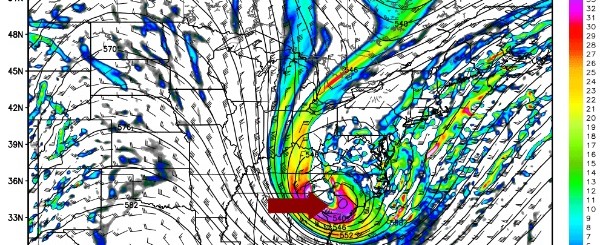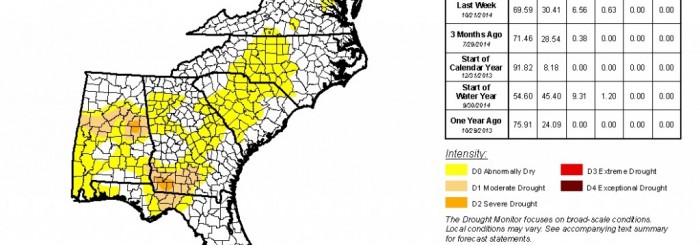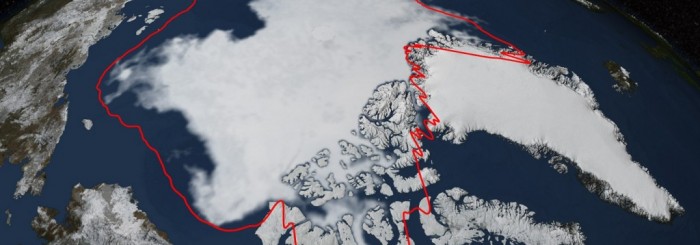-

Many weather forecasters on my social media feeds have been highlighting the unusually cold weather that is predicted by many weather models to hit the Southeast this weekend. I have previous written about frost on Saturday and Sunday mornings and the possibility of a few snow flurries in far northeast Georgia. The Capital Weather Gang…
Posted in: Climate outlooks -

The USDA issued this statement yesterday about impacts of the recent drought on Early County in GA and surrounding counties, which also receive drought benefits from this declaration: The U.S. Department of Agriculture (USDA) has designated Early County in Georgia as a primary natural disaster area due to damages and losses caused by a recent…
-

Deke Arndt at the National Climatic Data Center (NCDC) has a recent blog post at Climate.gov which provides some perspective on temperatures around the globe in 2014 to date and what it means for the yearly temperature record. The post points out that the globe has already set several temperature records this year and that…
-

If you are looking for a point-specific hourly weather forecast for applications like spraying, you might be interested in this product from the National Weather Service. It is a graphical hour-by-hour forecast for your location (by lat/long) that is available online. For most of Georgia you can go to https://www.srh.noaa.gov/forecast/gridpoint.php?site=ffc and either enter your lat/long…
-

The first of two cold fronts will pass through the Southeast on Wednesday, bringing a few showers to the area. A second cold front is expected to come through on Friday, bringing even colder temperatures this weekend. Temperatures below freezing are predicted for large portions of northern Georgia on Saturday and Sunday mornings, with high…
Posted in: Climate outlooks -

One of the questions I am sometimes asked about is the effects of changes in sea ice in the Arctic and Antarctic on weather in other parts of the world. As you may know, Arctic sea ice has generally been decreasing since the 1970’s, while Antarctic sea ice is increasing, although not at the same…
Posted in: Climate and Ag in the news -

Many of us in the Southeast have been enjoying the unusually warm weather we’ve had for the past few days. In fact, Macon tied their record high of 88 F today (old record was in 1919) and Savannah and Augusta broke their records with 90 F observed today at both locations. This marks the latest date on…